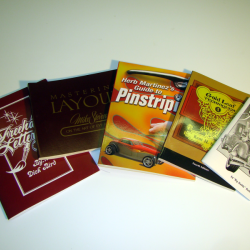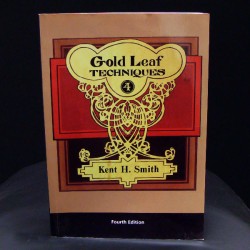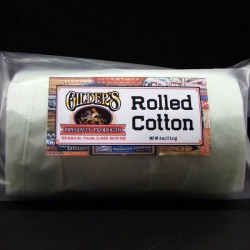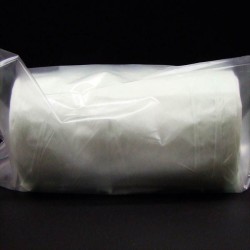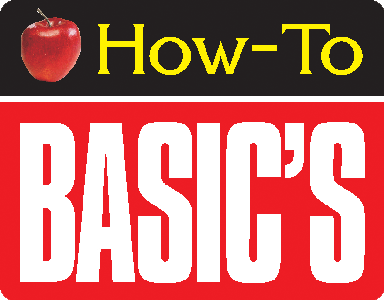
Gold Leaf Application How To-Surface Gilding
Gold Leafing application how to surface gild precious metals. Instructions, materials, tools and techniques. The discussion is based on the use of "Oil Based Gold Sizes". Different brand of Sizes and your current temperatures may affect set-up and dry times.Gold Leaf application Article by Ron Percell
I hope this is the beginning of a enriching journey into field that many hold atop the pinnacle of decoration and lettering. This article is designed concerning the basics of Surface Gilding using the Oil Size method. We hope to simplify these steps to help you gain the basic knowledge behind water gilding for hobby or business.
Basics: Many objects such as lettering, pinstriping, decorative designs & glass can be surface gilded.
Clean surface free of dirt grease and wax. Lightly dust surface to be gilded with Shadow Kaolin as a resist, and then lightly blow off any excess powder. If a pattern is needed, now place pattern and use the Shadow Kaolin to pounce your design to the surface.
Use brush of choice, then apply Gold Size to area being Gilded. When gold size has dried but still has tack then the size is ready to gild with Gold Leaf. The leaf comes loose, at this point you may use wax paper to pick up the loose leaf and then place over the size. Once in place gently rub the backside of the wax paper down to assist in transferring gold. Repeat this process until all size is covered with leaf.
Now use your Gilder's Dusting Mop to lightly pounce down gold and then begin dusting gold lightly until all flaps of gold that did not stick down are gone. While dusting gold, collect up excess gold (Skewings) for touch-ups and to prevent gold dust from getting all over items in the room. After dusting the gild, inspect it for any areas that are missing gold and patch any voids.
Then repeat the dusting technique until all flaps are gone. Now it is time to Burnish the gild with cotton in order to help blend in the seams and to help hide any minor blemishes or imperfections.
Burnishing can be done many ways but it's most important keep your cotton clean while burnishing, check the cotton frequently for any gold build-up because even gold can mar/scratch itself. You may now either clear coat or leave unbolted.
Gold Leaf Surface preparation is important when gilding for success.
I prefer to gild on the cleanest surface possible, gold after applied highlights any imperfections. I prefer to also paint my surfaces or lettering with a coat of gold or mustard colored oil based gloss enamel such as One Shot's Sign Painters Enamel or Ronan. This provides a clean dirt free undercoat, and if there's a minor crack or hole in the gold, the undercoat will help hide the flaw, which can happen on hand laid gilds.
Shadow Kaolin as a Resist?
This one of the finest powders available to use as a resist in keeping gold from sticking to the surface of a project. Having to clean up undesired gold stuck in areas you don't wish it to be can be a pain. Shadow Kaolin can be applied with the make-up pad or a rag by wiping surface area to apply a light dusting of powder or could be described as a light Frosting. After dusting I blow of any excess powder or debris with my mouth. When applying gold size to the surface over the Shadow Kaolin, it turns clear from the wet size and shows/indicates good coverage so as to avoid missing an area that you wish to have gold applied.
On projects when a pattern is needed, place pattern over powdered surface and use the Shadow Kaolin to pounce your design to the surface. The use of regular pounce powders can cause a ragged edge. Never place recently coated boards in the sun with pounce powders on the surface; paints have absorbed powders in the past while sitting in the sun.
Applying Gold Size:
Gold size should be applied in a thin single coat. While Sizing a surface I always prepare a test panel of gold size to the side of my project on a similar piece of material that I can touch to check drying time of Gold Size, so I don't contaminate the sized project I'm working on. Gold Size may be applied with brush, roller, and sprayed. Always read directions on the can of size, and where the proper OSHA approved masks. For those who get dust in their size and have tried eliminating all dust from their room and are still getting particles, you might try warming the size slightly and then use coffee filters to filter the size. In the case of possible fisheyes/separation areas, this can be caused from the size settling over time. Just slowly pour the size into clean can then pour back into the size can, this is enough mixing. You should never stir your size because it can introduce air bubbles which may never make it to the top of the size to escape, and could dry in the size as debris, causing problems on later gilds.
When is Gold size Ready?
The goal with size is to have it dry to the surface, but have a tack strong enough to attach leaf. A sizing that is still wet underneath can sag or tear later causing the gild to fail. After all if you put a metal lid over wet paint, it tends to slow or stop the drying process. When check the size, most use the knuckle test which involves bending your fore finger and touching your knuckle to the surface of the tester then lifting up to check for a popping sound. A perfect dry size feels as tacky as masking tape, but if the knuckle is dragged across the tester with a little pressure and the size slides off with a wet underside, the size will need to set up longer. If when dragging the knuckle across the tester and the size is tacky and rather rolls up tacky like rubber cement without any wet underside, your size is good. If the size is dry and no longer tacky, remove size with mineral spirits or turpentine, and resize. It's good to size out of the sun when possible. .
Applying Gold:
Gold comes in loose form and patent. Loose comes as it sounds loose in a book containing 25 sheets, and Patent is gold that's been pre-attached to Rice paper. I prefer to use loose leave on all projects because patent leaf can occasionally leave bits of rice paper in the size. If I need patent leaf I simple pre-cut pieces of wax paper about ½" larger than the leaf, then open the book on a flat surface and gently lave the wax paper over the gold then apply a slight bit of pressure and this helps the gold to stick to the wax paper, then I transfer the gold to the surface, then rub down and transfer the leaf. Repeat this process until all size is covered with leaf
Removing Excess Gold:
Now use your Gilder's Dusting Mop to lightly pounce down gold and then begin dusting gold lightly until all flaps of gold that did not stick down are gone. While dusting gold, collect up excess gold (Skewings) for touch-ups and to prevent gold dust from getting all over items in the room. After dusting the gild, inspect it for any areas that are missing gold and patch any voids. Then repeat the dusting technique until all flaps are gone.
Burnish the Gild:
Burnish the gild with cotton in order to help blend in the seams and to help hide any minor blemishes or imperfections. Burnishing can be done many ways but it's most important keep your cotton clean while burnishing, check the cotton frequently for any gold build-up because even gold can mar/scratch itself.
You can Burnish for special effect which can also hide minor imperfections such as engine turning in which a tool is used to spin a tooled pattern across the gild or by burnishing in straight lines for a brush surface look, yet with advanced techniques you can even burnish prismatic effect within the gild
Clear coat or Not to Clear coat?
Gold, Silver, Aluminum, & Copper leaf are all made from metals that can tarnish over time from being touched or contaminated with oils. Typically if a Gild can be touched (if attached 8' or below) we Clear Coat the project with 2-3 coats of clear for protection. If a gild is in a position 8' or above and won't be touched don't clear coat. A gild will last longest if it isn't clear coated.
I myself am currently using a product know as frog juice straight from the can applying with brush without thinning. After gilding project is completed I wait 24 hrs before clear coating to allowing the size to close or dry completely then I apply 1 coat early in the day and a second coated late in the day being careful not to over stroke an area that might soften the coat applied earlier that day. Now many believe this to be enough but I choose to apply a third coat on the next day to get a good deep gloss, the surface when dry shouldn't have any dry spots.
If I were rushed, I use clear coat in a spray can, and give a 2-3 light coats allowing the clear to flash dry before adding additional coats. Once the surface has had a few light coated I can spray one final coat that's heavier and gives met a wet look, being careful not to apply too much clear that could run or sag.
Now have a little patients, and you'll be gilding all the time with practice. Also don't be critical of your first gilds because you often see the project unfold as when others see the project finished and look at you like a magician, asking how you did that.
The best tip I can offer in promoting gold leaf to customers is to make small sample panels every time you gild, soon someone will be asking you to Gild for them!

